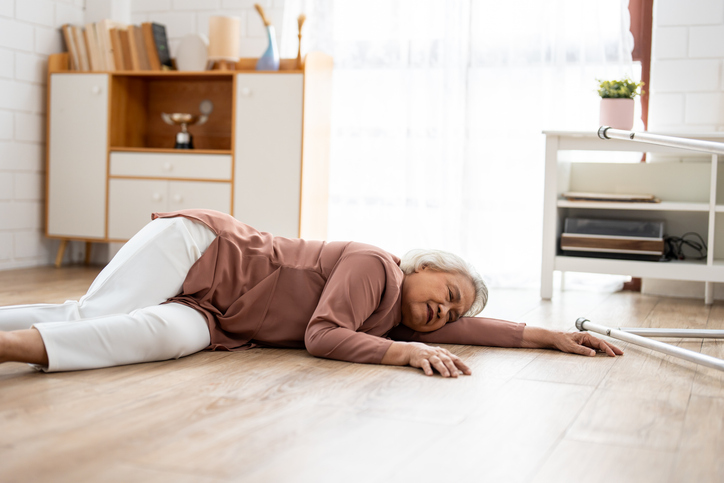Media release
From:
Tailored exercise programs, vitamin D supplements, and better nutrition are proven to help prevent falls in aged care homes reveals a new study from Flinders University.
A major international review led by Flinders University and published by the Cochrane Collaboration analysed data from 104 clinical trials involving nearly 69,000 older people living in care facilities across 25 countries to explore how to reduce falls.
Lead author Dr Suzanne Dyer says that it is the most comprehensive study of its kind and offers clear guidance for aged care providers, families, and policymakers.
“Falls are one of the most common and serious health risks facing older Australians, they can lead to broken bones, hospital stays, and a loss of independence,” says Dr Dyer from the Flinders Health and Medical Research Institute (FHMRI).
Dr Jenni Suen, another author of the review says, “Our findings show that preventing falls isn’t about a one-size-fits-all solution but there are some simple, easily deployed and targeted ways to make a real difference in reducing falls.”
The study found the most effective approaches to prevent falls in aged care homes were those tailored to each resident’s needs and delivered with strong support from aged care staff, but that exercise and nutrition were common themes.
“One of the most effective strategies was regular, supervised exercise, which reduced falls even in residents with cognitive impairments, like dementia,” says Dr Suen.
“We found that this type of exercise, especially when done consistently, and in groups or for more than an hour a week, were shown to reduce the number of falls.”
Many older Australians in care have low vitamin D levels, which can affect muscle strength, and the addition of vitamin D supplements proved helpful in reducing the overall number of falls.
Nutrition also played a role with an increase in dairy servings that were high in calcium to strengthen bones resulting in fewer falls and fractures.
Dr Dyer says that, “By adding more calcium and protein-rich foods like milk, cheese, and yoghurt, aged care homes were able to improve residents’ bone health and stability”.
The study found that giving each resident an environmental assessment, medication review, and an exercise plan based on their individual needs, delivered with strong staff engagement significantly reduced falls.
“As part of our research, we wanted to see what types of programs weren’t working as effectively in preventing falls,” says Dr Dyer.
“Programs such as improving medication use (deprescribing or reviewing prescriptions) and staff training, and changes to care models on their own didn’t consistently reduce falls.”
“We now have strong evidence that some approaches work better than others,” she says.
“Tailored exercise programs, vitamin D supplements, and better nutrition can make a real difference. With the right mix of strategies, it’s possible to reduce risks and help older people in care stay safer and more independent,” she concludes.
The article, ‘Interventions for preventing falls in older people in care facilities,’ by Suzanne M Dyer, Wing S Kwok (University of Sydney), Jenni Suen, Rik Dawson (University of Sydney), Dylan Kneale (University College London), Katy Sutcliffe (University College London), Lotta J Seppala (University of Amsterdam), Keith D Hill (Monash University) Ngaire Kerse (University of Auckland), Geoffrey R Murray (Amsterdam Public Health Research Institute), Nathalie van der Velde (University of Amsterdam), Catherine Sherrington (University of Sydney), Ian D Cameron (University of Sydney). DOI: 10.1002/14651858.CD016064
Acknowledgements: The Australian National Health and Medical Research Council provides salary support for authors through the Centre of Research Excellence for Prevention of Falls Injuries (Dyer, Suen, and Kwok) and Medical Research Future Fund (Dyer and Suen). Dylan Kneale is supported in part by ARC North Thames and the National Institute for Health Care Research ARC North Thames.
Multimedia




 Australia; NSW; VIC; SA
Australia; NSW; VIC; SA



